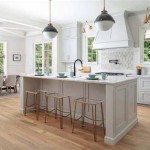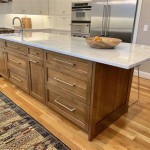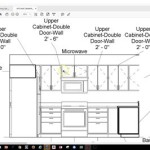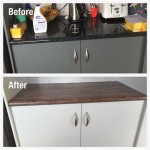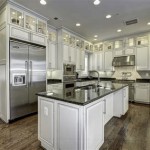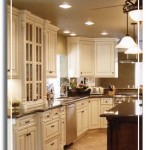Kitchen Cabinet Boxes: The Foundation of Your Culinary Space
Kitchen cabinets are a cornerstone of any functional and aesthetically pleasing kitchen. While the doors, drawers, and finishes capture attention, it is the sturdy and well-constructed cabinet boxes that provide the essential framework for your culinary space. Understanding the anatomy and importance of kitchen cabinet boxes is crucial for making informed decisions when designing or renovating your kitchen.
The Anatomy of a Kitchen Cabinet Box
The cabinet box, often referred to as the carcass, forms the basic structure of the cabinet. Typically, it comprises four vertical sides (the sides, back, and front) and a bottom. Here is a breakdown of the key components:
- Sides and Back: These panels are usually made of plywood, particleboard, or medium-density fiberboard (MDF). They provide structural support and enclose the cabinet's interior.
- Front: This panel serves as the face of the cabinet and can either be a solid piece or a framed construction with stiles and rails to accommodate doors, drawers, or open shelving.
- Bottom: The bottom panel forms the base of the cabinet, supporting the weight of the contents and preventing sagging. It's often made of plywood or particleboard with a moisture-resistant finish to prevent warping or rot.
- Joinery: The cabinet sides, back, and bottom are joined together using various methods, including dadoes, rabbets, pocket holes, or dowels. The choice of joinery depends on the cabinet's construction method and the desired level of strength and durability.
- Finish: The exterior of the cabinet box may receive a variety of finishes, such as paint, stain, or laminate, to match the overall kitchen design and enhance moisture resistance.
The Importance of Cabinet Box Construction
The construction of the cabinet box plays a vital role in its durability and resilience. Here are some key considerations:
- Material Quality: The material used for the cabinet box significantly impacts its longevity. Plywood, with its cross-grain construction, is generally considered the most durable and stable option, while particleboard and MDF can be susceptible to moisture damage and warping. Ensure the chosen material meets your needs and the demands of your kitchen environment.
- Joinery Strength: The strength of the joins between the cabinet box components is crucial for preventing sagging and ensuring structural integrity. Well-executed dadoes, rabbets, and other techniques provide strong and lasting connections.
- Cabinet Size and Weight Distribution: The weight of the cabinet contents and the overall size of the cabinet should be factored into the construction. Larger and heavier cabinets may require additional support or reinforcements to prevent sagging or movement over time.
- Moisture Resistance: Kitchen environments are inherently humid, and the cabinet box is exposed to splashes and spills. It's essential to choose materials and finishes that are resistant to moisture damage and prevent mold growth.
Cabinet Box Styles and Options
Kitchen cabinet boxes come in various styles and configurations to suit diverse design preferences and storage needs. Some common styles include:
- Framed Cabinets: These cabinets feature a frame surrounding the panel, adding a traditional and classic look to the kitchen. They offer greater structural strength and flexibility for incorporating decorative moldings.
- Frameless Cabinets: Commonly known as European-style cabinets, these feature a simple, sleek design without a frame. They maximize interior storage space as the cabinet doors are mounted directly to the sides.
- Base Cabinets: These are the standard lower cabinets, typically 34.5 inches tall, that provide ample storage for cookware, appliances, and other kitchen essentials.
- Wall Cabinets: These wall-mounted cabinets offer overhead storage solutions for dishes, glassware, and other frequently used items. They come in various heights and widths to suit your kitchen layout.
- Tall Cabinets: These vertical cabinets, often referred to as pantry cabinets, provide extensive storage for food, pantry items, and appliances. They can be seamlessly integrated into the existing cabinet layout or stand alone as a separate unit.
When selecting cabinet boxes for your kitchen, consider the overall style and design aesthetic you want to achieve, the storage needs of your household, and the budget allocated for cabinets. By choosing high-quality materials, robust construction techniques, and a style that complements your space, you ensure the foundation of your kitchen serves you well for years to come.
Kitchen Base Cabinets 101 Ana White
Diy Upper Cabinet Boxes
10x10 Shaker White Kitchen Cabinets Cabinetselect Com
Kitchen Cabinet Storage And Organization Kitchendesignpros
Custom Kitchen Cabinets
Diy Upper Cabinet Boxes
Overhead Kitchen Cabinets A Must Have For Modern Kitchens
How To Choose Kitchen Cabinets When Remodeling
1pc Medium Size White Pp Kitchen Cabinet Storage Box Minimalist Style Home Living Snack For Room Convenient And Organizing Kitchenware Tableware Food Items In Drawers Shein
Diy Wood Pull Out Tray Drawer Box Kitchen Cabinet Organizer
Related Posts

